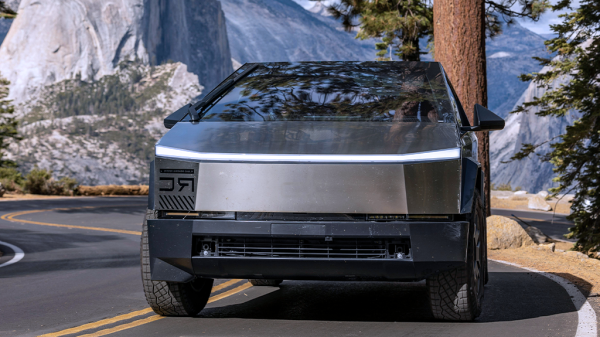
I don’t remember who said it – it was a general expression about how people find them through long tail searches and then ‘hop-scotch’ around their site.
And it got me thinking:
Traditional blog navigation sucks. Big time.
In July, the people that found me via search engine looked at 1.74 pages per visit. Of course, half of those people were only trying to find a chicken sandwich joint and found me instead. I’m sitting here on 272 posts and 21 pages on my blog over the last 14 months or so, and only a handful are looked at with any frequency. And granted, only maybe 20% of anything there is worth reading, and that’s a conservative estimate.
If someone is looking at a post I wrote 18 months ago, how do I facilitate their exploration of the site from there? How do I get them to recognize that the stuff they want to see might be there and that they can get to it easily?
Think about the typical category link. You click on it, it shows you a bunch of posts in that category, a huge rambling list. It’s ugly, it’s unfriendly, it’s not easy to use and see what’s there. When did spewing mounds of tangentially related content onto a long page become an acceptable content organization paradigm?
Typically, you’ve got your little links across the top, some down the side, maybe even two rows of them – something I personally find incredibly difficult to read, and very distracting. Lots of text links, sprawling down the length of the page. I’d love to see some other heat maps of how many people actually click or look at those things. I know from those of my own site – not many. But I’m just a guppy in these waters.
What the big boys do.
I went over to Amazon to have a look around. Who has more stuff to organize and show than Amazon, right?
So. Amazon homepage. Navigation: both sides, across the top. They’re trying to sell me a Kindle and some Tevas in the middle, in some prime page real estate (Amazon doesn’t quite have me figured out, I only read electronic books while barefoot). But hold on: I bet I can get to anywhere on Amazon using only that top nav bar and the small high-level side nav bar. Because as soon as I click on, say, Apparel & Accessories, I get to pick: Apparel, Shoes, Jewelry, or Watches.
Obviously, we pick shoes. And voila, our navigation choices change. I have now identified myself as a shoe buyer, and the site has changed accordingly. The center is a special offer, prominent, followed by some basic category navigation with pictures. The right nav – all offers specific to shoe purchasers, pictures of shoes, special savings on shoes, it’s a whole shoe orgy over there. Left nav – more categories: womens, mens, childrens, athletic, eco-friendly. Also: shop by brand, shop by size.
Translation?
This has some basic translation to real estate websites. I want to talk to a first time buyer differently than I talk to a move-up buyer or to a seller. So why do I show them the same navigation, the same links to the same stuff, making the same offers to everyone? This makes no sense to me.
If the whole point is to get the right information to the right person at the right time, then shouldn’t my navigation, my whole site adapt to that person as they make navigation decisions?
And as a corollary: if I allow people to navigate easily to the stuff they want to see, then wouldn’t it be more appropriate to not shove a huge thousand word post in their face unless they specifically request to read it?
(Also, I’m accepting gifts of anything made by Privo, size 8. Hurry, there’s some special offers…)
Kelley Koehler, aka the Housechick, is usually found focused on her Tucson, Arizona, real estate business. You may also find her on Twitter, where she doubles as a super hero, at Social Media Training Camp, where she trains and coaches people on how to integrate social media into successful business practices, or at KelleyKoehler.com, a collection of all things housechick-ish. Despite her engineering background, Kelley enjoys translating complex technical concepts into understandable and clear ideas that are practical and useful to the striving real estate agent.












































Melina Tomson
August 2, 2008 at 9:09 pm
I have been messing around constantly with my blog due to this very issue. Flow is really important to me. I know when I go to sites with bad flow, I just leave. If you find a blog site with good blog flow let me know.
I’m running out of ideas.
Bob
August 2, 2008 at 9:09 pm
A lot depends on what your goals are. Amazon isn’t a blog and their sole goal is conversion, so the mindset is different. Most RE bloggers want their posts to be front page, and that happens at the expense of conversion.
WP is unbelievably flexible in the right hands, and with a slight change in perspective, conversion rates can go way up.
Take a look at the sites of two who comment here on AG:
MackPerryHomes.com. and Dan Connelly’s Realty4Atlanta.com. Both are on a WP platform, but the blog is not the focal point. The home pages are static and designed to sell (kind of a novel idea given that they are real estate agents). There are other static pages as well, but the key feature is that the right nav on these pages is specific to the page – the buyers page has right hand nav links useful for the buyer.
The goal with both of these sites was to gain a more Amazon-like conversion rate, while maintaining the blog, all under one roof and set upon the same foundation.
A third example is Kristal Kraft’s KristalSellsDenver.com. As many know, Kristal is a prolific writer and her blog archives go back 5 years, yet Kristal is a salesperson first and foremost. Conversion is priority one. This site is simple in appearance and the home page navigation is intuitive. Click through to the static pages on home buying or relocation though, and you will be presented with a side nav whose link architecture is specific to the page topic. It too is built on WP.
By removing the blog as the primary focus, you can actually attain better results. Changing the focus is the hard part though, because most will find that a very small percentage of users who enter the site on non-blog pages click through to the blog. That can be hard on the ego for some.
Teri Lussier
August 2, 2008 at 9:12 pm
I happen to have a great fondness for thousand word posts.
Amazon? Brilliant idea, as usual. I’m trying to find a theme that gives me a gazillion, or at least a few, ways to get to information. The normal blog category idea does suck and isn’t as useful as it could be and that’s where I lose a few people. I’m not sure I want to be Amazon, but one or two steps more than what I have would be nice.
Seth Parker
August 2, 2008 at 10:46 pm
I hate the navigational structure of most blogs, including mine. I’m always changing themes, looking for plugins, etc., and it’s hard to look at it from a potential client’s perspective. I would like to find a widget with a “My Favorite Posts” or something that I could specify to keep some fresh links on the main page. I have a few good ones (I think, anyway), but they’re buried in with the bad ones.
Plus, I had to throw a comment in here. My RSS feed keeps telling me that I’ll get a free pizza or a leprechaun or something if I comment! 🙂
Benn Rosales
August 3, 2008 at 1:10 am
Seth, you’ve come to the right place, here’s exactly the plugin you dream of https://www.ditii.com/2007/05/31/featureme-wordpress-plugin/
I tested this plugin with 2.5 but not 2.6. Try it out and let me know what you think.
Best, Benn
Carson Coots
August 3, 2008 at 1:43 am
Joomla is an alternative to WordPress when you really want to have the site side modules and menus change according to the section or subject of the current page.
You can assign ‘modules’ to show only within specific sections and categories. The modules can be lists, menus, photos, and anything else. Oh, and modules can be used in a plethora of positions including the footer and header.
Oh yea, you can make the entire theme change according to sections also. So theoretically, a user might be reading a relo-based article and see nothing but custom relo buttons and banners down the sides, a list of neighborhoods, a map and you may even want only articles in the relo category to have moving boxes next to the logo in the header. All possible.
The bad news is that Joomla has a longer learning curve than wordpress, and really can be a tax on time when customizing. But… it is a great CMS for getting more control over everything.
One could argue that time used to increase conversion is better than time used to draw even more traffic in many cases. A site that adjusts around the visitor will always win if it manages to make the experience more relevant without ruining the simplicity navigation.
Teri Lussier
August 3, 2008 at 4:03 am
Carson-
I’ve been toying with the idea of using Joomla- do you use it? Have any RE sites you can share as an example? How long is “a longer learning curve”?
Mike Taylor
August 3, 2008 at 5:55 am
I think as prolific as we might like we are sometimes, 90% of the people who land on our sites are looking for one thing…homes for sale. They might come back to the blog later to find out who we are and what we have to say, but I think you always need to have what they are looking for easily accessible.
Mack in Atlanta
August 3, 2008 at 8:33 am
@ Bob You are absolutely correct. WP is an awesome platform and being able to customize the side navigation based on whether the visitor is in the buyer, seller, home search, blog, etc sections of the site does give the visitor a more personalized return to their query.
Kelley Koehler
August 3, 2008 at 10:29 am
Thank you Bob! I’ve been saying for a while that a blog is just a framework, so the question of do I have a website or do I have a blog is like asking if you want to eat fruit or if you want to eat an apple. It’s just an easily leveraged framework.
Teri – you and your thousand word posts… 🙂 Long posts are fine. Are they fine for every situation and visitor? Maybe not.
Carson – we ended up with WP mu (yeah, I know I said Drupal earlier. I got busy, didn’t have time to pick it all up, and we can do 90% of what we want with mu) and a structure that should allow us to present the proper information to the proper person. Someday, I’ll learn Joomla, it always sounds interesting.
Mike – the people that land on my blog aren’t usually looking for homes for sale, if you trust their search keywords. The people that land on my traditional static site – those people are searching for homes for sale. I’ve got 2 vastly different audiences going to 2 very different places.
Seth Parker
August 3, 2008 at 12:47 pm
Ben,
Thanks! I’ll download and play with it tonight! I’m still on 2.5….lots of complaints about 2.6, so I’ll stay put for now.
Erion Shehaj
August 3, 2008 at 9:57 pm
@Bob This post is unbelievable for those of us that blog for business. I love the idea of customizing options based on the characteristics of the prospective clients. In other words, looking at the hierarchy of links on a site navigation as a system of filters that tell you more and more about what that consumer might be interested in seeing, is the right idea here. But one also has to be careful in making sure that if someone misclicked a link, they are not presented with an unsolvable mase of worthless options resulting in an immediate clickout.
@Kelley Great post! As soon as I read it, I opened up a new tab to see how Amazon’s navigation structure worked. Considering some changes to my site as well. Thanks for the chore 🙂
Bob
August 4, 2008 at 10:41 am
Erion, that is an excellent point. While most online think in terms of site architecture, just as important is the concept of “information architecture”.
Take a look a this article about carding sorting, written by Claus Schmidt. He discusses the technique for sorting any number of subjects into just seven themed groups. In most cases, this would be the top nav that would be consistent across the site.
Claus originally posted that here on Webmasterworld.
Bob
August 4, 2008 at 10:50 am
@ Carson, In addition to Joomla, Drupal is also excellent for this kind of flexiblity, but it also has a fairly steep learning curve.
Mark Eckenrode
August 9, 2008 at 1:18 pm
this is a great topic of conversation and one that really should be held live since there are so many angles to the discussion.
real quick aside re: amazon: i visit there often, not to shop but to see if i can spot any changes. they constantly are split-testing their layout, copy and design. constantly. watch godaddy, too. they’re often tweaking with things.
back to regular programming: when it comes to navigation there’s really 3 things at work, layout/design (obviously), copy (big difference between “home listings” and “find a home”), and conversion channels (the paths you want visitors to take once they hit your site). all of it should help your visitor achieve their goals and yours.
here i go with strategy before tactics again 😉 with your site, you’ll definitely have the main channel you want your visitors to take (you’ll most likely have 3 or so – one for folks ready to act now, ones doing research, and those still in the contemplation phase).
now, when you create the content for your site (blog posts, tools, articles, etc) consider how it will re-direct visitors into one of those channels because, let’s face it, not everyone will be coming through the front page…
amazon and godaddy both do this, go check out their sites now and look to see what actions they consistently keep guiding you towards.
before you start playing with how and where you have your navigaton set up, get crystal clear on what channels your navigation should support.
Steve Simon
August 12, 2008 at 8:26 pm
You are absolutely right! (and I don’t often say that to people), however your point still leaves an unanswered dilema, “How do you get the user oriented variable interacting site without having a budget like Amazon’s?”
I would like to test different page looks (let alone navigtion systems). The reality is unless you’re BMW, Amazon or the like, Google will not enen crawl your site with enough frequency to allow you to make the changes in a meaningful setting. You’ll be trying to gauge your new approach and Google will be showing your two month old cache. They are going to crawl the big guys ten times more frequently, and clean their cache close to real time; they are not going to allow you that same luxury.
I am not always received well but I usually tell the truth 🙂
Mike Taylor
August 12, 2008 at 8:51 pm
@ Steve – Have you ever heard of or used website optimizer from Google? This allows you to do what I think you are talking about with no penalty or any negative ramifications from G. You should take a look at it.
Steve Simon
August 13, 2008 at 4:57 am
Well since you brought it up (and some others had a very good alternative) lets have some more discourse 🙂
The Google optimaizer just lets you measure, track, and gauge which setup is working best for you..
It does not create the different version, nor will it guarantee a faster more frequent crawl and crawl will and does ot mean an update of your cache..
Some good points:
Joomla the CMS king will do exactly what we are speaking of without much difficulty; the problem as stated, Joomla is so robust, that the learning curve is quite intense.
There is another option!
A really spectacular WP theme. You can download a “Magazine” type theme like this one:
https://www.der-prinz.com/2008/01/20/wordpress-magazine-style-theme-branfordmagazine/
It will do all that we have been discussing, but again the learning curve goes well beyond basic wordpress.
It does however have great appeal to me, and I think a switch will happen soonas my school site is only seven months old, better now than two years from now 🙂
Mark Eckenrode
August 13, 2008 at 11:13 am
steve, i am totally not getting your connection between google crawling your site and optimizing your on-page navigation for visitor experience. they’re completely unrelated. oh, and the google-bot is “trainable.”
Steve Simon
August 13, 2008 at 12:35 pm
I don’t need to turn a series of comments into a debate. My point was and is each time you revamp a site, you can sit there for weeks with the entire site or portions thereof in Googles cache. If you’re telling me that the time and resources needed to do this and effectively make the changes while the Bot tracks the results for you is insignificant to you, you are very lucky.
You have a very nice home page, but your point of view is a very aggressive Guerilla marketer’s point of view.
I am just talking about fact and detail. Your response was a little cheeky, so in the interest of in-kind return 🙂
Your home page has 107 html errors on it. I would attend to that before discounting what others had said. Here is the link to your pages validation report:
https://validator.w3.org/check?uri=https://www.homestomper.com%2F
Mark Eckenrode
August 13, 2008 at 4:21 pm
@steve: hey man, it’s all good. i’m not trying to discount what you’re saying – in a conversation on getting ranked and getting ranked quickly, your google cache point belongs.
however, in a topic on optimizing page navgation for better usability and visitor conversions… ya lost me. i could just be dense but i don’t see the connection between google’s cache (rankings) and usability (conversions). but, hey, i’m in class if school is in session…
and yeah, my site doesn’t validate ass 100% clean html/css because i have repeating CSS id tags. oh, the horror 😉 i don’t see how that ties into the topic at hand, either.
it seems that you’re talking about aspects of SEO which is all find and dandy but, like i said, if the google cache has any weight on converting on-site visitors i’m all yours, man…
Steve Simon
August 13, 2008 at 7:56 pm
The folks reading the original post were reading about navigation. Your suggestion(s) will allow for duplicate links, down time, needs for analysis and potential penalties from the search engines.
Your marketing mentors the Guerrilla Guys are very aggressive.
I would guess from your writing style I am a little older than you. Less aggressive, and am much more likely to buy into Google’s concept of Simply Provide Useful Content.
In looking over your site at Homestomper.com (the name kind of says it all:) I see the much outdated concepts of force feeding material, manipulating short term responses, and more. Capturing emails and list building so as to ultimately “Assault Market” is counter to most of the best agents I have met. The best agents, have been organized consistent listeners, with good attention to details.
I have taught over twenty thousand students (all adults) the principles and practices of real estate, sales and broker level, certified general appraising, and mortgage brokerage.
I spent eight years in public office I have seen an aggressive slick delivery more than a few times.
The tactics that you suggest (on your other sites will not lead to high level of ethical performance).
We are simply very different people…
Last post here for me, You were here first 🙂
Mark Eckenrode
August 13, 2008 at 10:25 pm
@steve: all i’m trying to get from you is an explanation on how optimizing a site for visitor usability and conversion is related to google’s crawl and cache… and how you’d be penalized by google for doing so.
a point you still haven’t explained. why am i pushing for it? because there’s enough mis-information out there already.
my suggestion of understanding your visitor’s goals and the different levels of information they need at different points in the buying process only helps you to create releveant content so that they can more readily achieve their goals… and, yeah, you get to achieve yours along the way, too. seems like good business. aggressive? interesting choice of words for an approach that’s visitor-centric.
let’s take a look at your arguments against this visitor-focuesd approach:
1) duplicate links – cross-linking content is actually a good thing for google and site visitors. if google didn’t like you linking to on-site content then blogs wouldn’t stand a chance in their rankings but we all know that’s quite the contrary. google loves deep-linked content.
as for the user experience side of cross-linking content – linking to content that’s relevant only helps them find the information they’re looking for in an easier more accessible manner. yay for usability.
2) down time – turning on a split/taguchi/multivariate test on a site will take a few minutes at most. if you’re re-designing a layout or theme then you’re doing that offline. no down-time there.
3) needs for analysis – umm, yeah, you definitely want to analyze your stats. a business owner who doesn’t look at his stats is plum crazy. doing so can even unearth market intelligence that could be contrary to your thinking – further enabling you to properly optimize the site for your visitor. site and business analysis is important – of course you want to do this. silly rabbit…
4) potential penalties – you still haven’t explained this one for us but judging by the fact that google provides one of the best multivariate/split test tools available you don’t have much weight here. in fact, google even rewards advertisers in their adwords system for optimizing their ads (and sites!) for relvancy and click-throughs – they lower your bid prices. google likes sites that are designed with the user in mind.
the suggestions i gave actually support google’s concept of Provide Useful Content.
wow… look at all these words i just typed and not once did i attack you or feel the need to try and validate myself.